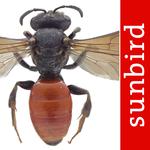
Bees recognize, determine and identify in fields, gardens, forests and meadows
advertisement
| İsim | Wildbienen Id BienABest |
|---|---|
| Sürüm | 1.1 |
| Güncelleme | 06 Eyl 2023 |
| Boyut | 382 MB |
| Kategori | Kitaplar ve Referans |
| Yükleme sayısı | 10B+ |
| Geliştirici | Sunbird Images OHG |
| Android OS | Android 6.0+ |
| Google Play ID | com.sunbirdimages.bienen_id |
Wildbienen Id BienABest · Açıklama
In order to identify wild bees, this unique bee app was developed as part of the BienABest research project. The project was funded by the BMU + BfN.
This wild bee identification app contains the most common and striking 101 wild bee species in Germany.
The app is characterized by close-ups of the individual bee species. The photos were taken by Hans Schwenninger with great technical effort using focus stacking and then released. Another highlight is the identification key specially created for this app by experienced taxonomists (Erwin Scheuchl, Hans Schwenninger), with which even laypeople can intuitively and easily get to the bee by simply selecting individual features. For the quick identification of bees, among other things, you can choose from colors, size and shape.
Thus, this app is the only serious wild bee identification app in Germany.
The Wildbienen Id BienABest app is part of the BienABest joint project, which aims to secure and increase the “pollination by wild bees” ecosystem service nationwide. The Association of German Engineers (VDI e.V.) coordinates the overall project. The network partner is the University of Ulm. This funding project of the Federal Agency for Nature Conservation (BfN) is funded in the Federal Biological Diversity Program with funds from the Federal Ministry for the Environment, Nature Conservation and Nuclear Safety (BMU).
Each species contains a bee board, on which the whole body of the bee is depicted from above, as well as another cut-out picture that shows the head of the bee from the front. The board can be clicked on and enlarged so that even more details of the bees become visible.
You can use the app to create watch lists and export them for your own use as well as for scientific mapping activities.
This free basic version includes:
• 101 wild bee species
• 202 images in 101 identification boards with unique cut-out photos
• Art portraits of each species with information on appearance, purpose and confusion, ecology, behavior and distribution
• Germany distribution maps
• Show species names in German or scientific names
• Search function for quickly finding a bee
• Intuitive determination function
• Show similar species
• Compare function for direct comparison of boards and distribution maps of up to 8 species on the iPhone and up to 16 species on the iPad
• Location determination and data acquisition using GPS
• Creation and export of watch lists
In the future, the app is to be expanded in at least 300 ways.
This wild bee identification app contains the most common and striking 101 wild bee species in Germany.
The app is characterized by close-ups of the individual bee species. The photos were taken by Hans Schwenninger with great technical effort using focus stacking and then released. Another highlight is the identification key specially created for this app by experienced taxonomists (Erwin Scheuchl, Hans Schwenninger), with which even laypeople can intuitively and easily get to the bee by simply selecting individual features. For the quick identification of bees, among other things, you can choose from colors, size and shape.
Thus, this app is the only serious wild bee identification app in Germany.
The Wildbienen Id BienABest app is part of the BienABest joint project, which aims to secure and increase the “pollination by wild bees” ecosystem service nationwide. The Association of German Engineers (VDI e.V.) coordinates the overall project. The network partner is the University of Ulm. This funding project of the Federal Agency for Nature Conservation (BfN) is funded in the Federal Biological Diversity Program with funds from the Federal Ministry for the Environment, Nature Conservation and Nuclear Safety (BMU).
Each species contains a bee board, on which the whole body of the bee is depicted from above, as well as another cut-out picture that shows the head of the bee from the front. The board can be clicked on and enlarged so that even more details of the bees become visible.
You can use the app to create watch lists and export them for your own use as well as for scientific mapping activities.
This free basic version includes:
• 101 wild bee species
• 202 images in 101 identification boards with unique cut-out photos
• Art portraits of each species with information on appearance, purpose and confusion, ecology, behavior and distribution
• Germany distribution maps
• Show species names in German or scientific names
• Search function for quickly finding a bee
• Intuitive determination function
• Show similar species
• Compare function for direct comparison of boards and distribution maps of up to 8 species on the iPhone and up to 16 species on the iPad
• Location determination and data acquisition using GPS
• Creation and export of watch lists
In the future, the app is to be expanded in at least 300 ways.
























